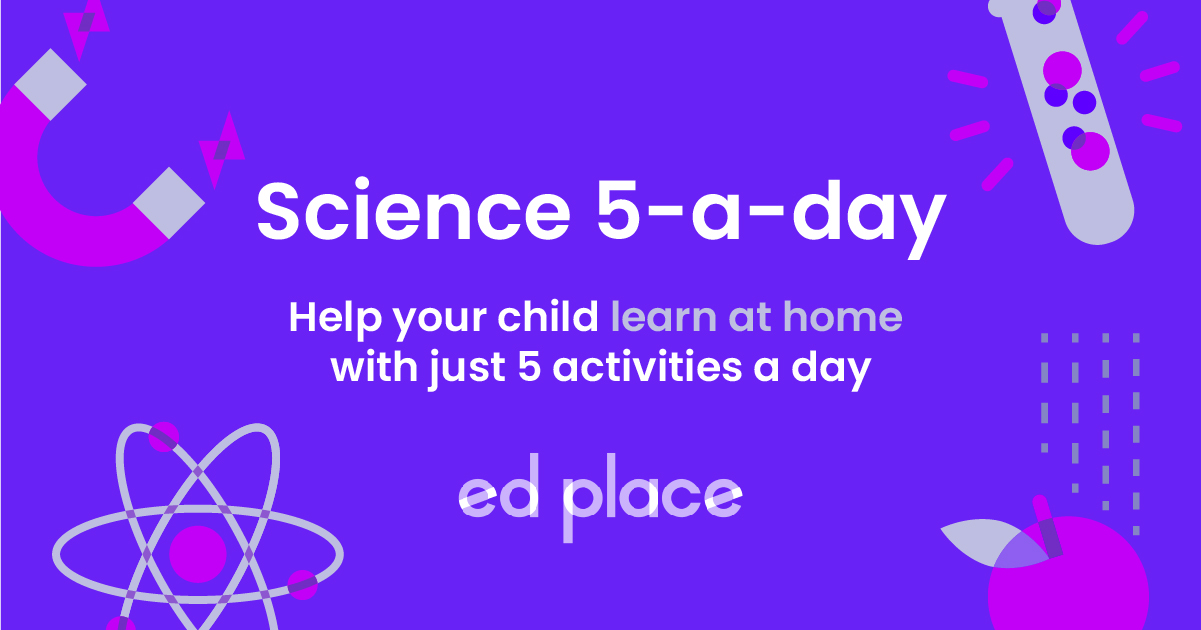
EdPlace's Year 8 home learning science lesson: Digestive Enzymes
Looking for short lessons to keep your child engaged and learning? Our experienced team of teachers have created English, maths and science lessons for the home, so your child can learn no matter where they are. And, as all activities are self-marked, you really can encourage your child to be an independent learner.
Get them started on the lesson below and then jump into our teacher-created activities to practice what they've learnt. We've recommended five to ensure they feel secure in their knowledge - 5-a-day helps keeps the learning loss at bay (or so we think!).
Are they keen to start practising straight away? Head to the bottom of the page to find the activities.
Now...onto the lesson!
Digestive Enzymes – it’s a question of remembering it all!
Sometimes there are quite a few facts that simply just need to be learnt in Science. Although there's no getting away from this, mnemonics can serve as useful memory prompts to help your child retain more information. There are already mnemonics out there for remembering, say, the order of the planets or the colours of the rainbow but what about the names and the action of the enzymes in our digestive system? We've come up with some mnemonics for this very purpose.
We're confident if you follow this step by step approach your child will be able to:
1) Name the three digestive enzymes
2) State where these enzymes act in the digestive system
3) Describe the action of these enzymes
Step 1: Learning the keywords relating to digestion
The job of our digestive system is to break down large pieces of food into small molecules, which are then absorbed into our bloodstream through the wall of the small intestine. This is achieved by digestive enzymes (these are proteins). Enzymes are biological catalysts – this means they speed up biological reactions. The large nutrients which need breaking down by enzymes are carbohydrates, proteins and fats.
Step 2: Knowing which enzyme breaks down which nutrient, and whereabouts?
So which enzyme breaks down which nutrient and whereabouts in the digestive system do they act?
Starch (found in foods like bread and pasta) is a type of carbohydrate. The enzyme amylase breaks down starch into sugar. This happens in the mouth (amylase is produced in the salivary glands as soon as you start chewing your food) and the small intestine.
Foods such as meat and fish contain lots of protein. The enzyme protease breaks down protein into amino acids. This happens in the stomach and the small intestine.
Fats (like those found in butter and olive oil) are sometimes called lipids. Fats are broken down by the enzyme lipase into fatty acids and glycerol. This happens in the small intestine.
Step 3: Mnemonics for memory
That is a lot of information to take in. See if these mnemonics help your child remember which enzyme breaks down which nutrient (and which small food molecules are produced as a result).
Amylase Turns Starch To Sugar = Awesome Toads Stop Tasting Sugar
Protease Turns Protein To Amino acids - Penguins Tried Protein That Afternoon
Lipase Turns Fat To Fatty acids And Glycerol – Lions Take Fat To Fairies And Gremlins
A useful strategy is to read the mnemonic to your child and see if they can tell you what it stands for (do not be discouraged this may take a few attempts to get right).
Step 4: Giving some questions a go!
Now try these questions on digestive enzymes:
1. What enzyme breaks down fats in fatty acids and glycerol?
2. What does protease break down protein into?
3. What nutrient (large food molecule) does amylase act on?
4. What small food molecule does amylase produce?
5. In which organ of the digestive system do all three digestive enzymes act?
Step 5 - Apply the knowledge and practise
Now try the following activities.
All activities are created by teachers and automatically marked. Plus, with an EdPlace subscription, we can automatically progress your child at a level that's right for them. Sending you progress reports along the way so you can track and measure progress, together - brilliant!
Activity 1 - The Digestive Enzymes
Activity 2 - How the Digestive Enzymes Work
This is a GCSE activity if your child is up for a challenge:
Activity 3 - Describe the Enzymes in the Digestive System
Answers
1. Lipase
2. Amino acids
3. Starch
4. Sugar
5. Small intestine
Keep going! Looking for more activities, different subjects or year groups?
Click the button below to view the EdPlace English, maths, science and 11+ activity library








